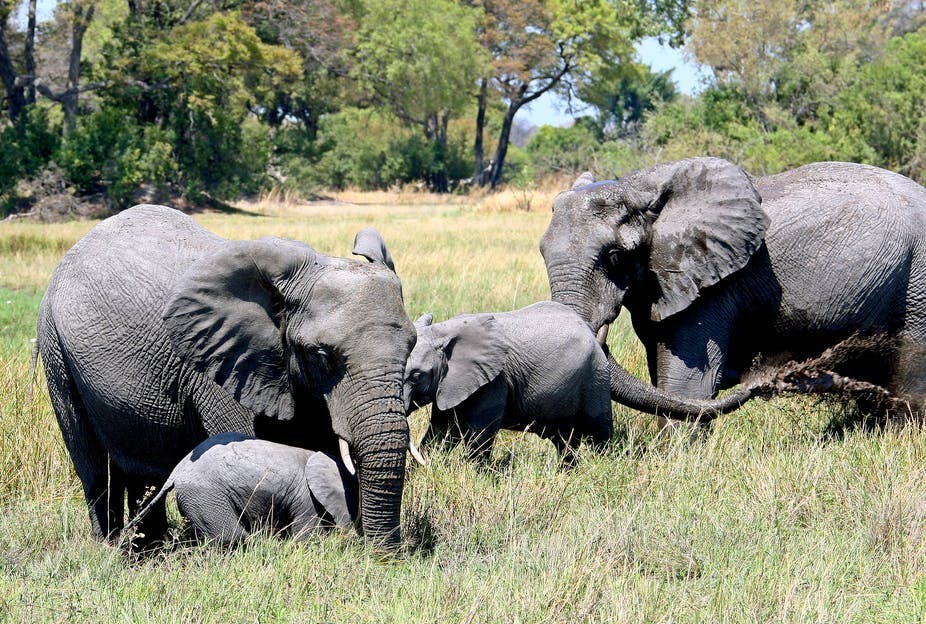Although initial research suggested otherwise, poaching of African elephants has not decreased since 2011 in Western, Southern, and Central Africa, according to a new study. This highlights the need for continued efforts to save the remaining elephant populations on the continent.

Beginning around 2007, a wave of poaching for ivory affected populations of savannah elephants (Loxodonta africana) and forest elephants (L. cyclotis) across Africa. The total population of savannah elephants decreased by 30% between 2007 and 2015. In some countries, elephant populations declined by over 50% in under 10 years.
Recent reports, however, indicated that elephant poaching may be abating. Since 2016, some African parks have reported reductions or even a halt in elephant poaching. Likewise, global ivory prices appear to have peaked and may have begun to fall, perhaps as a result of bans on ivory sales.
Besides Eastern Africa, poaching rates are still at their peak
In a new study, Elephants Without Borders (EWB) with the University of Washington applied a novel statistical technique to analyze poaching data from the Monitoring the Illegal Killing of Elephants (MIKE) Program. They found poaching reduced only in Eastern Africa in recent years, dismissing previous estimations.
Lead author Dr. Scott Schlossberg, an analyst with EWB, said in a statement: “Reports of falling poaching rates in Africa are something of an illusion. Regionally, elephant poaching is decreasing only in Eastern Africa. For the rest of the continent, poaching rates are still near their peak and have changed little since 2011.”
The MIKE program is administered by The Convention on International Trade in Endangered Species of Wild Fauna and Flora (CITES), a multilateral treaty to protect endangered plants and animals. At MIKE sites, rangers record the number of elephant carcasses they find. The proportion of those carcasses that were killed illegally was used as the measure of poaching rates in the new study.
The researchers said Central and Western Africa are the areas of more concern regarding poaching. In Western Africa, remaining elephants are mostly in small and scattered, which makes it difficult to withstand poaching. Central Africa is the home of the African forest elephant, a species that has experienced severe losses.
The poachers are not easing up their efforts, so the countries of Africa and supporters of elephants around the world need to keep up the fight against poaching. We have already lost over 100,000 elephants to poaching since 2007. Reducing poaching should be a top priority of conservationists,” co-author Michael Chase of EWB said.
While they described the reduction in poaching in East Africa as “real and laudable,” the researches said governments and conservationists shouldn’t let that improvement influence their outlook on what’s happening in the rest of the continent. Poaching levels in Central and Western Africa are “unsustainable” and more vigilance and anti-poaching efforts are needed.
The study was published in the journal Scientific Reports.





